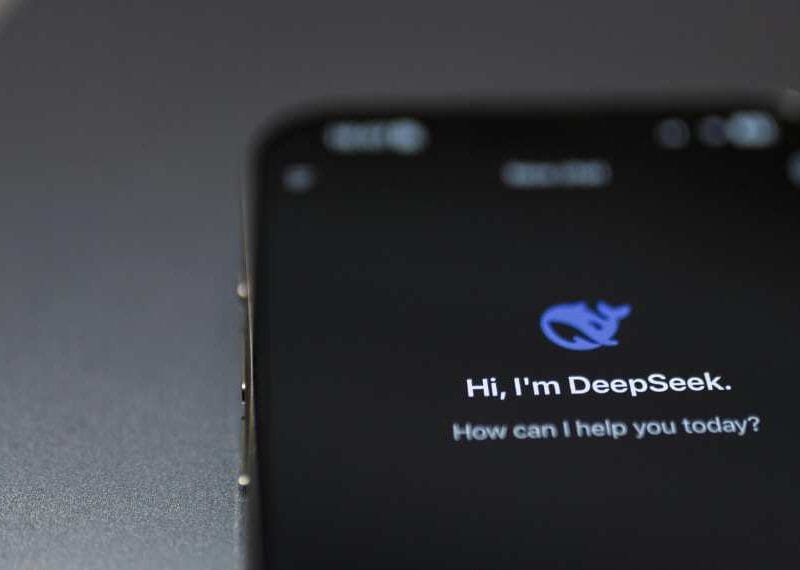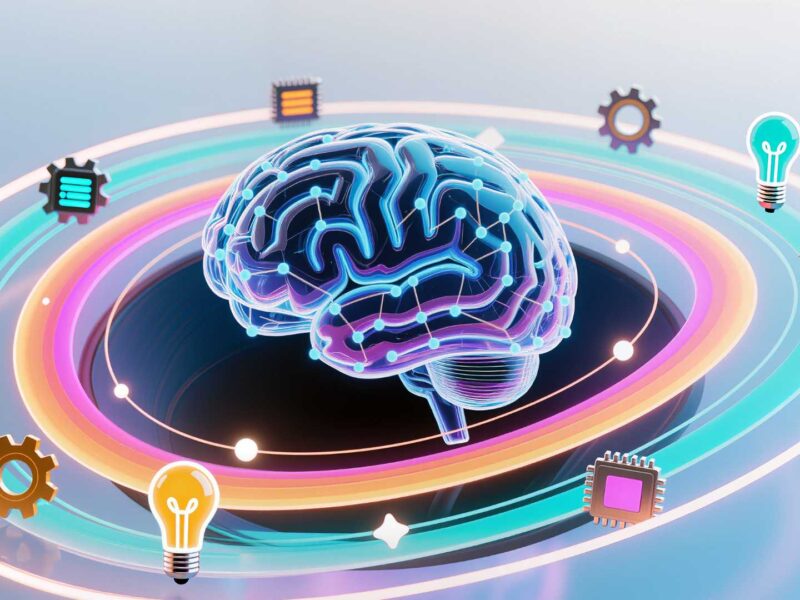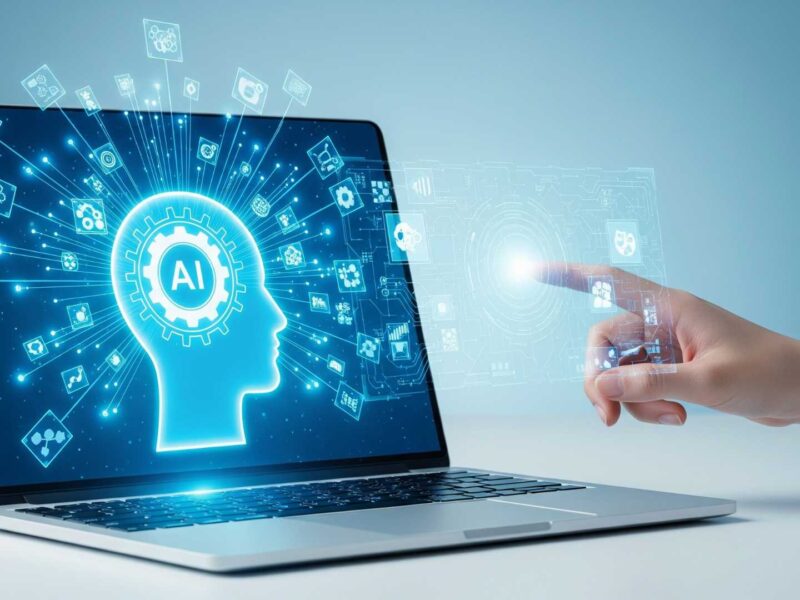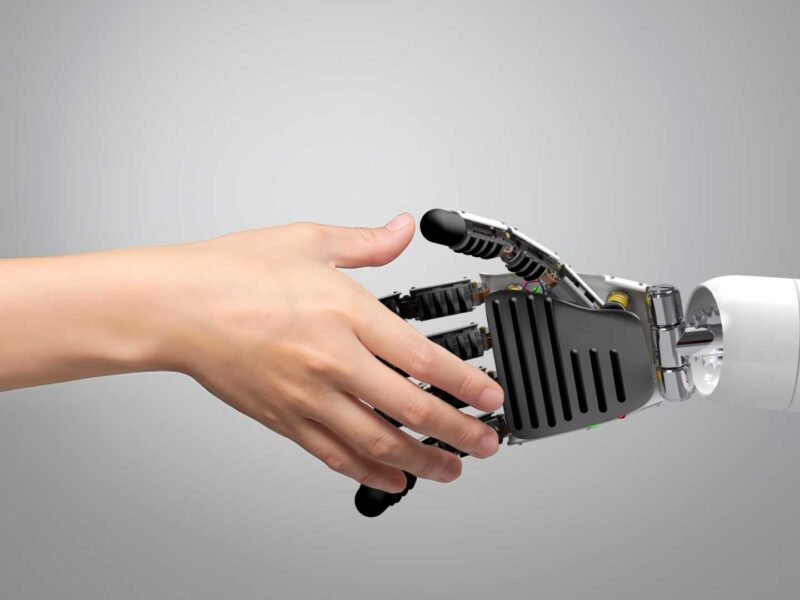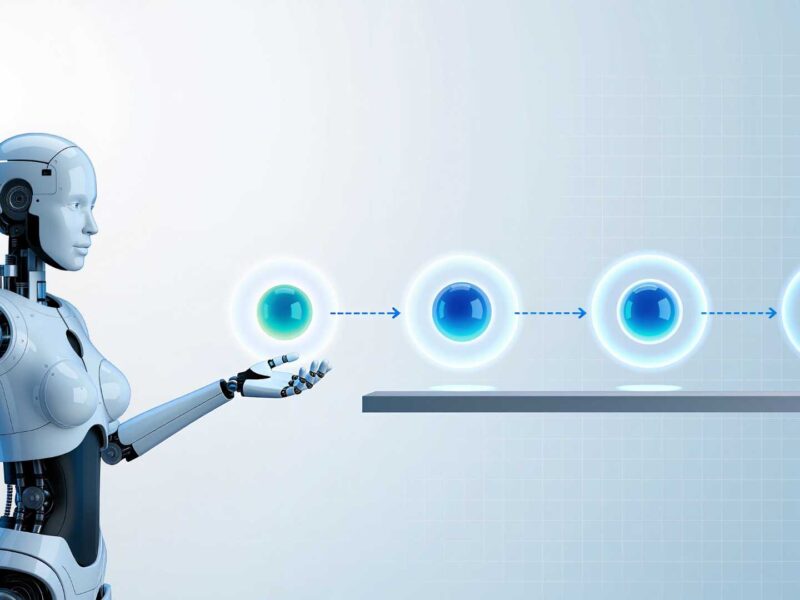Revolutionizing Education: Keeping Pace with AI and Tech
The rapid advancement of Artificial Intelligence and technology presents a formidable challenge to traditional education systems:
How can universities and institutions effectively prepare students for professional success when the very tools and demands of the workplace are evolving at breakneck speed?
The uncomfortable truth is that by the time students graduate, some of what they’ve learned may already feel outdated, creating a significant skills gap between academia and industry.
This chasm demands more than mere curriculum tweaks; it necessitates a fundamental rethinking of educational models, faculty development, and the very definition of a “future-ready” graduate.
This article compiles invaluable insights from business leaders, thought leaders, and tech professionals, exploring innovative strategies to revolutionize education, ensuring students don’t just keep pace with AI evolution, but are equipped to lead it.
Read on!
Micro-Internships Prepare Students For Real Challenges
Embedding micro-internships, dynamic 2-4 week project sprints where students dive into real industry challenges, is a great reimagining of how education can transform to meet the challenges of a fast-paced AI-driven world.
Picture this: tech pros hand over live, pulsating case studies like optimizing an AI chatbot for seamless customer interactions or debugging a predictive model. Students, guided by engaged faculty and industry representatives, roll up their sleeves and use their educational expertise as well as experimental research to tackle them. Going beyond textbook exercises, they go straight to the front lines!
Mini-apprenticeships would prove to be a masterclass in agility, mirroring fast-paced tech and driving students to think on their toes, spark collaboration, and seize initiative to solve a real-world problem. Students are no longer memorizing theories for a future they may be underprepared for. Instead, they’re introducing themselves to cutting-edge tools, prototyping solutions, learning all about teamwork, and living the experience.
The result? Graduates who don’t just know about tech but are ready to hit the ground running in a world where no syllabus can truly keep up with AI evolution!

Tej Kalianda
UX Designer, Thoughtful By Design
Rethink Education For Success In AI Era
The rapid advancement of artificial intelligence requires universities to fundamentally rethink how they prepare students for professional success. This transformation extends beyond curriculum changes to encompass faculty development, institutional practices, and the very definition of effective education.
AI collaboration skills must be explicitly taught. Students need structured practice in communicating effectively with AI systems, learning how to prompt for useful outputs and iterate on results. This includes domain-specific applications – marketing students evaluating AI-generated consumer insights, healthcare students assessing AI-assisted diagnostics – rather than generic awareness. Students must also learn critical evaluation skills to recognise when AI outputs are reliable versus when they need human verification.
Faculty development becomes equally important as curriculum reform. Professors cannot effectively teach AI collaboration if they haven’t mastered these skills themselves. This requires sustained professional development programmes, not just introductory workshops, and may necessitate bringing in practitioners who are actively using AI in their fields to complement traditional academic expertise.
Assessment methods need a complete re-think. Traditional exams and papers lose meaning when students can generate sophisticated responses instantly. Faculty need new frameworks for evaluation that account for AI assistance while still measuring genuine understanding and professional capability.
Industry partnerships become essential for authenticity. Professional practitioners can provide crucial insights into how AI is actually being used in different fields, ensuring that what students learn reflects real workplace needs rather than academic assumptions about AI applications.
Institutional support must match the pace of change. Universities need clear policies, technical infrastructure, and ongoing training programmes. The timeline for adaptation has accelerated beyond traditional academic planning cycles.

Ger Perdisatt
CEO & Founder, Acuity AI Advisory
Rethink Education To Close The Skills Gap
On a humid Bengaluru evening last semester, I watched a room full of first-year computer-science majors struggle to debug a Python script that used TensorFlow 1.x—software two versions out of date. Their professor admitted the syllabus had been approved five years earlier and hadn’t kept pace with industry APIs. That small scene captures a global story: technology is sprinting, curricula are plodding, and students risk being left behind.
The World Economic Forum predicts 39% of workplace skills will shift by decade’s end. With 87% of companies facing skills shortages and U.S. high-school graduates projected to drop 13% by 2041, education must evolve. Confidence in colleges is waning, with Americans split on their direction. Three strategies show promise:
Industry-Embedded Curriculum: In Singapore, polytechnics partner with AI startups for capstone projects, with students’ code reaching production pre-graduation, yielding 90%+ placement rates.
Skills-First Credentialing: In 2025, 45% of U.S. employers plan to drop degree requirements, favoring certifications and practical exams. Removing degree filters for cybersecurity roles tripled qualified applicants in one case.
Continuous Faculty Reskilling: European universities fund industry sabbaticals for lecturers, refreshing curricula with real-world insights. A data-science professor revamped his course using fintech data, boosting engagement.
Technology accelerates progress. Adaptive learning tailors content in real time, while AI crafts relevant examples. A workplace micro-learning bot we built delivers concept cards during code reviews, achieving 80% completion rates. Though costs are low with cloud tools, policy inertia slows innovation. Educators must become designers of dynamic learning experiences, fostering creative, resilient thinkers for a rapidly changing world.
My litmus test is simple: can a third-year student walk into a sprint review and contribute meaningfully within the first day? If the answer is yes, the curriculum is working. If not, it is time to rewrite the lesson plan—before the next cohort falls behind.

Supratim Sircar
Software Engineer, Cisco
Rethink Education: Partner With Industry Leaders
AI and technology are advancing so rapidly that college classes can’t always keep pace. Some feel outdated the moment students finish them. To fix that, educators and tech leaders need to rethink how we teach.
Schools should work more closely with industry partners to keep course content fresh and aligned with what’s happening in the field. This could mean co-creating lessons, bringing in guest speakers from tech companies, or offering hands-on projects that reflect real-world challenges.
We also need to go beyond just teaching technical skills. Students should be learning how to think across disciplines from the humanities to work ethics, because that’s what the future of work will require. Short-term certificates, microcredentials, and project-based learning can help students stay up to date in between or even alongside traditional degrees.
Most importantly, tech leaders should share access to tools, mentorship, and real datasets so students can build meaningful portfolios. If we make education more flexible, connected to industry, and focused on real skills, students will be better equipped not just to keep up but to lead.

Monica Para
Graduate Student, University of Chicago
Teach Students How To Learn, Not What
Honestly, this is something I think about a lot. AI and tech are moving so fast that by the time students graduate, some of what they learned already feels outdated.
To help students keep up, we need to shift from just teaching fixed content to teaching how to learn. Bringing AI into classrooms through hands-on projects, real-world tools, and partnerships with industry can give students experience with the technologies shaping the future.
Educators and tech leaders should work together to keep courses fresh, maybe even with guest speakers or mentors working directly with AI.
And beyond just technical skills, helping students understand the ethical and social impacts of AI will prepare them to use it responsibly.

Chahana Dahal
Graduate Student, University of Nevada
Students Need Ownership, Not Speed, in Education
There’s a common assumption that schools just need to move faster to keep up with tech. But here’s the thing: speed doesn’t fix the core problem. The real issue is ownership.
Right now, students are consumers of education. They wait for schools to tell them what’s important. But in tech — and especially in AI — the most valuable skill isn’t knowing what to learn. It’s knowing how to decide what to learn. That’s a mindset shift. And institutions are terrible at teaching it.
So instead of trying to cram GPT-5 coursework into a dusty curriculum that barely had time to absorb GPT-3, schools should be doing something more radical: teach students how to self-navigate. Let them design their own learning tracks. Give them real problems to solve with open-ended tools. Hand them a sandbox, not a textbook. Show them how to validate skills in the market, not just in a classroom.
Tech leaders can help by open-sourcing learning paths from inside the industry. Imagine if every company published internal onboarding docs or skill ladders the way open source projects publish READMEs. That’s the kind of transparency that gives students a compass, not just a syllabus.
Bottom line: the world isn’t short on knowledge. It’s short on people who know how to figure out what matters before someone tells them.

Derek Pankaew
CEO & Founder, Listening
Industry Partnerships Create Real-World Ready Students
Collaborating with industry leaders ensures curricula stay aligned with evolving market demands. Incorporating real-world projects and case studies bridges the gap between theory and practice. Offering flexible, modular courses allows students to adapt quickly to emerging trends.
Integrating AI and tech tools into learning environments enhances hands-on experience. Encouraging lifelong learning through certifications and workshops keeps skills relevant. Building partnerships with tech companies provides access to cutting-edge resources and mentorship.
Linda Chavez
Founder & CEO, Seniors Life Insurance Finder
AI Education Must Teach Pipeline Fluency
In the AI space, one of the biggest mismatches we see is between what students are taught and how modern machine learning pipelines actually function in production. Educators still over-index on theoretical ML models, while practical skills like dataset curation, annotation quality control, and pipeline iteration are largely missing from the curriculum.
To close this gap, we need tighter collaboration between tech companies and universities, especially in structuring capstone projects around real-world AI use cases. One transformative approach we’ve seen work well is integrating annotation-as-engineering into coursework: students don’t just build models, they also handle noisy data, define edge cases, and evaluate model drift over time. That’s the kind of experience AI teams actually need.
Tech leaders should also open up safe sandbox environments, with anonymized data and open toolchains, that let students practice on realistic problems. This beats static case studies and gives them exposure to the full AI lifecycle, not just modeling.
Ultimately, the future of education must shift from course completion to pipeline fluency, preparing students to think like product engineers, not just data scientists.

Roy Andraos
CEO, DataVLab
Pair Human Insight With AI for Education
AI is no longer a future concept—it’s the present tool helping students catch up with real-world demands. I’ve worked closely with schools that are scrambling to align their IT instruction with today’s cybersecurity and cloud standards. One common issue? Outdated lesson plans that don’t reflect the pace of AI development. Teachers are doing their best, but they need help.
At Tech Advisors, we’ve supported local colleges by showing faculty how to integrate AI tools into their grading, assessment, and even lab simulations. It frees them up to mentor students instead of managing rote tasks.
What works best is pairing human insight with AI systems that handle the repetitive parts. I’ve seen this play out in classrooms using platforms like MATHia and Squirrel Ai. They help identify learning gaps early and adjust difficulty levels automatically, while teachers provide the human support every student still needs.
A good friend and tech peer, Elmo Taddeo, once shared how his team helped a school implement adaptive AI that flagged students falling behind in real time. The results? Faster interventions and happier teachers. We need more of this.
Here’s my advice to educators and tech leaders: don’t try to replace your curriculum all at once. Start small. Use AI to track student progress or provide feedback on assignments. Bring in IT professionals who can coach teachers on real-world tech skills—cloud management, zero trust security, or network hygiene. Update course materials every year, not every decade. And most importantly, focus on what only a human can do—build relationships, coach students, and help them grow into curious, capable professionals. That’s how we prepare them for the future.
Dynamic Skill-Building Trumps Static Content Delivery
The truth is, most traditional curricula can’t keep pace with how fast AI and tech are evolving — and students know it. At Legacy Online School, we’ve seen this firsthand with high schoolers asking to learn ChatGPT prompt writing and data visualization before it hits any formal syllabus.
To stay relevant, education has to shift from static content delivery to dynamic skill-building. We update modules every year based on industry trends and feedback from advisors working in tech, not just academia. It’s not perfect — but it’s fast, and that matters more now.
Educators and tech leaders need to stop thinking in 4-year programs and start thinking in real-time relevance. The most important thing we can teach students today is how to learn, unlearn, and retool quickly. That’s what makes someone future-ready — not a diploma, but adaptability.

Vasilii Kiselev
CEO & Co-Founder, Legacy Online School
On behalf of the Techronicler community of readers, we thank these leaders and experts for taking the time to share valuable insights that stem from years of experience and in-depth expertise in their respective niches.
If you wish to showcase your experience and expertise, participate in industry-leading discussions, and add visibility and impact to your personal brand and business, get in touch with the Techronicler team to feature in our fast-growing publication.





